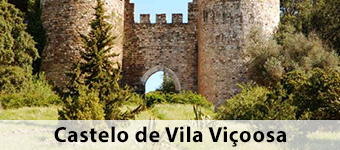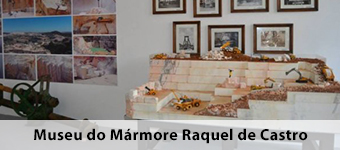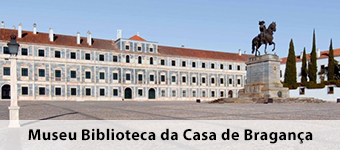Heritage Central Alentejo
Alandroal
It is a borderland village of Evora district and is home to the city of 4 parishes, Alandroal, São Brás dos Matos and Juromenha; capelin; Santiago Maior and Terena. The municipality is limited by Vila Viçosa the north by Spain to the east by Mourão and Reguengos de Monsaraz south and west Redondo.
- Fortress Juromenha
- Castle of Alandroal
- Castle of Terena
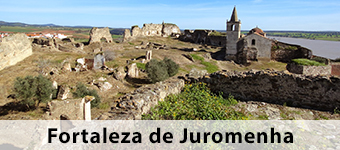
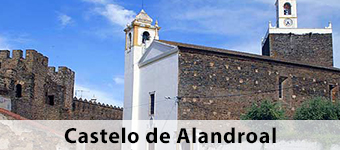
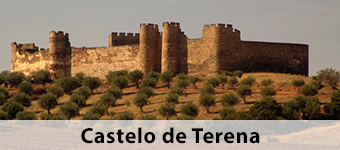
Borba
It is a town in the district of Evora and 4 parishes of the municipality: Matriz; Orada; Rio de Moinhos and São Bartolomeu. The municipality is bordered to the northeast by Monforte, east pro Elvas, southeast of Vila Viçosa, the southwest by Redondo and west by Estremoz.
- In order to promote their wine entities Adega Cooperativa de Borba, Quinta do Zambujeiro, Lda., Sovibor, Lda. Provide a wine tasting.
- Castle of Borba
- A space where you can learn a little history of the Edge people is the Pole Museológico Azinhal Abelho which features Borba by the look of Joaquim Azinhal Abelho, natural Oratory, born on April 13, 1911, he studied at the Faculty of Arts University of Lisbon and was founder of the Rural Theater in Elvas, the Old Arch Theatre and the Theatre d’Art, in Lisbon. This center was created after the local authority have acquired part of the estate of Joaquim Azinhal Abelho. It is open to the public Monday to Friday from 09: 00h -12: 30h / 14: 00h – 17: 30h; closing on Saturdays, Sundays and holidays.
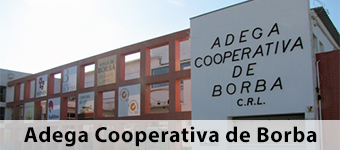
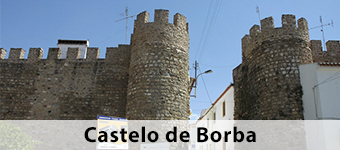
Arraiolos
It is a village in the district of Evora and seat of the municipality of 5 villages, Arraiolos; Gafanhoeira (St. Peter) and elderberry; little church; St. Gregory and Santa Justa and Vimieiro. The city lies limited to the north by Mora and Sousel, east by Estremoz, to the south by Évora, southwest of Montemor-o-Novo and northwest by Coruche.
- With regard to wine tourism in this region there is the Adega das Mouras de Arraiolos (Wine Academy), Herdade dos Coelheiros, Mount Commendation Agritourism, Lda., Mount Ravasqueira, Agricultural Society Sossega, Lda. And Earth Village, They present their wines and complete with a wine tasting.
- Castle of Arraiolos
- Situated in the village of Vimieiro, the Interpretive Center Rural World consists of an old mill, the mill of Queirogas, which has been restored and adapted to engage museological functions, with a permanent exhibition and a new building for reception, showroom, offices technical, sanitary facilities and booking room. Open in summer (May to October) on Tuesday (15.00h to 19.00h), Wednesday to Sunday (10.00h to 15.00h to 19.00h of 13.00he), in winter (November to April): Tuesday Fair (15.00 h to 18.00h), Wednesday to Sunday (10.00h to 15.00h to 18.00h of 13.00he); closing on Monday and holidays from 24 to 25 December, 1 January, 1 May and Easter Sunday.
- The Interpretive Center arraiolos rug consists of socio-educational space, a multipurpose room, a documentation center, a multimedia space, a creative laboratory, exhibition rooms, support offices and collection of deposits. This comes from a building of great historical value, architectural and urbanistic, she obtained an intervention for its preservation that strengthened their structure and modernized spaces. It is open from 10h00-13h00 / 14h00-18h00; ending on Monday.
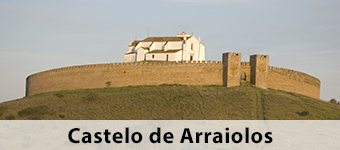
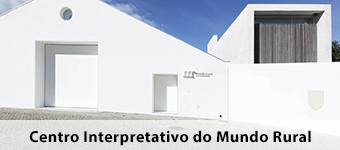
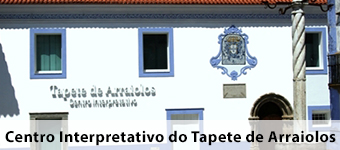
Estremoz
It is a town in the district of Évora and is home to the city of nine parishes, Ameixial (Santa Vitória and São Bento); arches; Estremoz (Santa Maria and Santo André); Evora Monte; Glory; São Bento do Cortiço and St. Stephen; São Domingos de Ana Loura; São Lourenço Mamporcão and São Bento de Ana Loura; Veiros. The municipality of Estremoz is limited by Sousel and border the north by Monforte the northeast, the southeast Borba, Redondo south and Évora and Arraiolos west.
- Estremoz is internationally recognized by the white marble quarries, and the Marble name of Estremoz, and their exploitation has a very ancient origin, verified by Romano Évora Temple and later the main altar of the Cathedral of Évora, which contain original marble Estremoz the region.
- The wine tourism is promoted by entities Slopes of Estremoz, Herdade das Servas, J. Portugal Ramos, Júlio Tassara Bastos – DONA MARIA WINES, Marcolino I. Chícharo Sebo, Monte Seis Reis, Herdade dos mansions Santa Maria do Carmo Thursday and Thursday the Moor, who have their wine through wine tasting.
- Castle of Estremoz
- Formerly the monasteries were not only places of worship were also temples to know and in order to reuse the built heritage, the Living Science Centre Estremoz is largely in the Convent of Maltezas. In this center, science and technology are not confined to frame walls, and go in search of the most curious, a place where they can play, experiment, discover. The Convent of Maltezas is on the north side of the yard of downtown Estremoz, this was classified as a National Monument, in particular the Mercy Cloister, where the Life Science Center. This sixteenth-century convent of Gothic-Manueline style keeps its regional materials including Estremoz marble, masonry and tiles. The Life Science Center is press the Tuesday public to Sunday from 10.00 to 18.00 and is closed on Monday and holidays.
- Opened in the eighties, the Agricultural House Museum José Matos Cortes, which was named after the sons of Joseph M. Matos cuts to his father on the occasion of his 90th birthday. The Court family has always been linked to the farm and to demonstrate your life in the fields, utensils, tools and implements this activity, promoted the opening of this museum. In several rooms they are different by representing the rural professions, the field of women’s work and the work of farming. This museum is in Veiros village and only opens the application for visitors.
- In the Church Congregados, the Sacred Art Museum of Estremoz brings together a collection of religious objects of a series of extinct and Chapels Chapels of Estremoz region. It is open to the public from 10h00 – 12h00 and 15h30 – 17h30; ending on Monday, Saturday, Sunday and holidays morning.
- Located in the old Convent of San Francisco, the Cavalry Regiment Museum No. 3 intends to present its past and present providing an overview of the military actions in Estremoz. Opens the visitor’s request, morning at 09h30m 12.00 and in the afternoon from 14h30 to 17h00m.
- In a century building XIII / XIV, which over the centuries and years has undergone changes to adapt to the functions that had to raise, namely Charity Hospice, the School Royal, Primary School Men and Industrial and Commercial. The idea to build a museum was presented by the Mayor at the time, Mr. Deville, and later met and opening the museum in an annex of the Library in 1880. Over the years, the museum acquired the new, from dolls typical Estremoz Industrial School, the pieces of sacred art, furniture and earthenware Antiquarian Chambel, and a collection of barrística of Estremoz Eng. Julio Maria dos Reis Pereira. Since 1972, the museum moved to the current building, as it has more space and with the collaboration of the National Park Service, a workshop on the patio was created for barristas Brother Ginjas could work. In 2003, it came to be called Municipal Museum Prof. Joaquim Red, named after the man who propelled this action. In 2005, due to craft typology of the county, the museum joined the National Network of ceramics and in 2006, was founder of the Museum Network of the entire county of Estremoz. It is open from 9:00 to 12:30 and 14:00 to 17:30 and closed on Mondays and holidays.
- Created in 1951 by the House of Santa Maria People, the Rural Museum of Estremoz has as its founders Messrs. Bento Simões Caldas and Cortes. Initially it was in the Convent of Maltezas, but over the years, the museum has undergone expansions, both structural and in the collection, consisting of pieces related to the ethnography of the region, which forced the change of premises. After the revolution of April 25, the People’s House suffered a significant drop, bringing the museum to know some decline. In 2003, he left the premises of the House of Commons, ending to the People’s House open elsewhere and meet conditions to return opening doors to the public. Currently is open from 9:00 to 12:30 and 14:00 to 5:30 p.m., ending on Sunday, Monday and holidays.
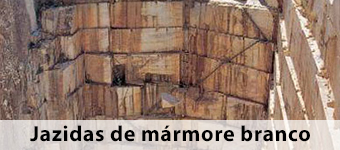
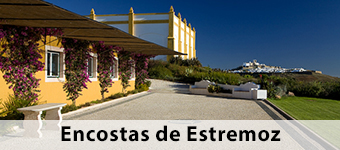
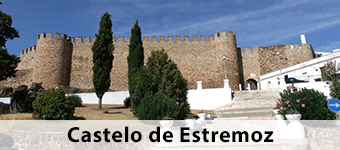
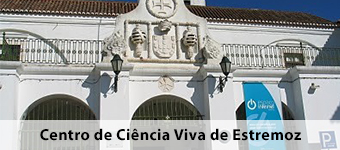
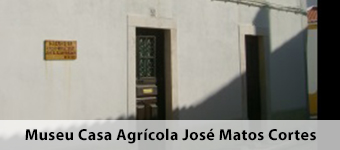
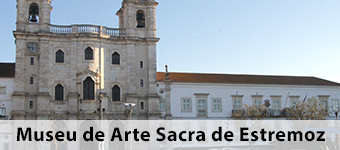
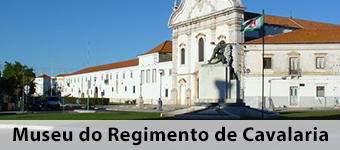
Évora
Évora is the capital city of Évora district and is the only Portuguese city that is a signatory of the Network of European Cities Oldest. Évora is home to one of the largest municipalities in Portugal, with 12 parishes, Bacelo and Health Lady; Canaviais; Évora (São Mamede, Cathedral, St. Peter and St. Anthony); Malagueira and Horta das Figueiras; Our Lady of Grace Divor; Our Lady of Tourega and Our Lady of Guadalupe; Our Lady of Machede; São Bento do Mato; They are Manços and St. Vincent’s Pigeiro; San Miguel de Machede; São Sebastião da Giesteira and Our Lady of Good faith; Coelheiros tower.
The municipality is limited by Arraiolos the north by northeast Estremoz, Redondo by the east by Reguengos de Monsaraz the southeast, by Portel the south by Viana do Alentejo southwest and west of Montemor-o-Novo.
- It is still the headquarters of the former diocese, and an ecclesiastical metropolis – Évora Archdiocese. Its historic center is well-preserved and one of the richest in monuments in Portugal, earned him the epithet of City Museum. In 1986, this historic center was declared a World Heritage Site by UNESCO.
- Castle of Évora
- To promote wine tourism are some entities that offer a wine tasting, Charterhouse, Herdade da Calada, LOGOWINES, S.A., Pear Record – Soc. Agrícola Unipessoal, Lda and Route of Alentejo wines.
- Ebora Megalithica, an exhibition space to cover traces of megalithic and Roman periods, are the Remedios Convent. These two historical periods are of great importance in the city and in the region of Evora, while the megalithic heritage is remarkable both nationally, as the Iberian level and at European level, largely due to the dolmens and numerous enclosures; already existing Roman remains in Evora, including the ruins of the temple atop the hill are the symbols and are quite important in the Portuguese context. In this exhibition space are a set of representations and reconstructions of monuments, land-use and habitat structures, some are highlighted models of students of Fine Arts. These reconstructions will be a great asset for the dissemination, knowledge and interpretation of architectural and archaeological heritage of Évora.
- The Temple of Diana or the Roman Temple of Évora is a Corinthian-style temple, built at the beginning of AD I. This century is the remaining vestige of the forum of the city of Évora, being dedicated to the cultural imperial, unlike judged by popular tradition It identified him as worship monument to the Roman goddess of hunting, Diana. Over the centuries it has undergone changes due to invasions and change in their function, becoming the vault to the castle of the city. In the second half of the nineteenth century, the buildings were demolished and attached elapsed restoration works aimed at the recovery of the original layout of the temple. In the twentieth century, new excavations have found new traces of a portico and a mirror of water that surrounded him.
- Near Valverde comes the Anta Grande do Zambujeiro, a megalithic monument that was classified as a National Monument and is one of the largest dolmens in Europe and even the Iberian Peninsula. A tapir used by the communities of the Neolithic period and a paper burial and tribute to the dead, also served as a sanctuary, was the conclusion of several investigations after its discovery in 1965. This monument is 50 meters in diameter and is covered by a tumulus . After some digging, they were found and recovered a collection of ritual objects of adornment, ceramic vessels, blades and arrowheads, among others.
- The Chapel of Bones of the Church of St. Francis is one of the most emblematic monuments of Évora, built in the seventeenth century by initiative of three monks who intended to convey the transience message of life with the famous warning “We bones that are here by your hope “I found the entrance. This penitential architecture monument arches decorated with skulls queues, cornices and ships with over 5000 skulls coming from the cemeteries, located in churches and convents of Évora. Dedicated to Lord of the Steps, the image known in the city as Lord Jesus House of Bones, which expresses the suffering of Christ in his walk with the cross up to Calvary. Open to the public from 09h00-12h45 and 14h30-17h45, opening on Sunday at 10:00 am.
- The Noble House building Burgos Street is currently the Regional Director of the Alentejo Culture, the historic center of Évora. This house has a great historical and artistic value, built in the sixteenth century, on the initiative of a nobleman, whose name is unknown and installed several families from the court of Manuel, but in the late eighteenth century was owned by the Canon Secretary capitulate of the Cathedral Joaquim Nunes de Melo. In the nineteenth century, the Director Jose Carlos Gouveia becomes owner of the house, in which harbored his descendants until the end of the twentieth century, and was later sold. Public services settled in Burgos House, giving it a facelift and were found pre-existing Roman remains, including domus that was later reused as foundation of Old Fence; still found Islamic occupation of testimony in Evora and medieval times. Over the centuries, this house has undergone renovations, recovery and improvement, which introduced new elements of the Convent of Paradise. The latest architectural intervention came from eborense architect José Filipe Ramalho, who rehabilitated the building, adapting it to his new role. It is open from 09.00 – 17.30 during the week and ending on weekends.
- In cromelech Almendres, known as Almendres Cromlech is a major public monuments of mankind, even though the largest group of menhirs in the Iberian Peninsula and one of the most important in Europe. Initially it was composed of more than one hundred monoliths. With the excavation of this enclosure were detected various stages of construction throughout the Neolithic period until the current look. Here are 92 standing stones with different shapes and sizes, from small blocks to large blocks, which gave the place its name to Alto das Pedras Hoists. These formed two enclosures from different eras, twinned and oriented according to the equinoctial directions. The Cromlech of Almendres was a monument had religious function and most likely would have been an astronomical observatory. This is owned by José Manuel Neves.
- A space devoted to the promotion of artistic and cultural activities, focused to a social commitment and sustainable practices is the Eugénio de Almeida Forum, which focuses on multidisciplinary, inclusive and formative programming through exhibitions of contemporary art, performative projects and educational programs. This building comes from the reclassification of the assets of the Eugénio de Almeida Foundation, part of the regeneration of the city, adding the Inquisition Palace, the Houses Painted and former Eugénio de Almeida Forum. This forum has two floors, which comprises an area of 1,200 m 2 for temporary exhibitions and two spaces: the Rostrum room focused for the latest trends and experimental projects and the Atrium space, among other spaces, also highlighted the outer section, Páteo of Honor, the North Garden and the Garden of Painted Houses, whose gallery contains a unique example in Portugal, a palace wall painting of the second half of the sixteenth century. The Eugénio de Almeida Forum is open daily from 09h30-19h00 and closed at Christmas, January 1st and Easter day.
- Surrounded by the Public Garden, the Palace Art Gallery Manuel is one of the greatest examples of architecture Manueline courtesan, which crosses Mudejar influences with elements of Portuguese Renaissance, arising from an inspiration Manueline of the monasteries of Batalha and Jeronimos. This gallery is open in the summer of 14h00-18h00 and winter 10h00-12h00 / 13h00-17h00, ending only when no exhibitions patents.
- Opened in 1983, the Museum of Sacred Art of the Cathedral of Évora is located in the former College of the Young Men’s Cathedral Choir since 2009, hosting one of the best collections of sacred art in Portugal, shed vestments, painting, sculpture and jewelery. The most curious figure is the Virgin (Our Lady of Paradise) in the thirteenth century ivory, the body of this opens to become a triptych with small carved scenes representing the Virgin of life in nine episodes. During summer open from 09.00 -17h00 and winter from 09h00 – 12h30 and 14h00 – 17h00. Closed on Monday and public holidays on 24 and 25 December and 1 January.
- The Carriages Museum was created in 1994 when the need to preserve the cultural heritage of the carriages, with collection resulting from the collaboration between the CPVO and the various owners with a mutual interest. This museum aims to introduce the plastic works of art and the heritage of Alentejo. This opens Monday to Friday from 0.00h – 12.30h, 14.30h – 18.00h and Saturday from 10.00h – 13.00h, 15.00h – 18.00h; closed Sunday and holidays.
- After years of closure due to construction, to June 2009, opens the Evora Museum with features permanent and temporary exhibitions, in which is included the century painting collection XV and XVI, sculptures of the Middle Ages and the Renaissance; also has ceramic collections, jewelery and tiles of various periods. A museum novelty is the Flemish altarpiece room, which reconstructs scenes from the Life of the Virgin, arranged chronologically. It is open from Wednesday to Sunday from 10h00 to 18h00, Tuesday from 14h30 to 18h00, with the last entry at 17h45m. Closed Monday, Easter Sunday, New Year holidays, May 1st and December 25th.
- In the old Center of Traditional Arts, it is installed the Museum of Craft and Design (MADE), which opened in November 2011. This museum was the subject of a renewal program and enhancement of its collection of responsibility of the Alentejo Tourism , ERT and the City of Évora. The museum houses the collection of the old Center of Traditional Arts, including the collection of Paul Parra on the memory of the traditional crafts of the Alentejo. The MADE is open from 09h30-13h00 and 14h30-18h00. Ending on Monday.
- The company eborensa San Francisco Furniture Gallery opened in November 2011, Joiner Museum, which aims to maintain the tradition of working with wood through a collection of old tools were replaced by electrical equipment; preserve and share the story of a family company, and thus create a new history for the community. This museum aims to achieve two objectives, collecting and preserving tools used in the past and search and expose these tools, transmitting to new generations, together with the spirit and the traditional attitudes of joiners and carpenters, Alentejo, through recreational and educational activities. Joiner’s Museum is open from 09h00-13h00 and 15h00-19h00 during the week and on Saturday from 09h00-13h00. Closing Sunday.
- More than 2,300 pieces, all mechanical, dating from 1630 to the present time, the Clock Museum has pocket copies, pulse, room among others. This is based in Convent Mosteirinho in Serpa, but has pole in Evora, meeting at the Palace Barrocal. Hundreds of collectors from Portugal, Spain, France, Germany and the Netherlands who trust the restore process or recovery of its parts. The polo Évora is open Tuesday to Friday from 14h00 – 18h00 and Saturdays, Sundays and holidays from 10h00 – 12h30 and 14h00 – 18h00, ending on Monday.
- In the acropolis of Évora, the Dukes of Cadaval Palace belongs to the Casa Cadaval, consists of the manor house and the Church Lóios in a combined style of Mudejar, Gothic and Manueline. The Dukes of Cadaval constitute a branch of the House of Braganza. In addition to the vast outdoor gardens, numerous rooms and lounges, the palace also hosts the exhibition rooms of the Casa Cadaval, which is a collection of illuminated codex, sculptures, paintings and armory, the XV and XVIII century. In the 1990s, the palace underwent restoration promoted by Dª. Claudine Marguerite Marianne Tritz, then Duchess of Cadaval, wife of the 10th Duke of Cadaval and current dowager. And he opened the garden to the public. Today, this palace has a tourist industry, joining his church, make a set with great historical and architectural value, the scene of various cultural events, including the “Évora Festival Classic”, an annual music festival held since 1994, on the initiative of Dª. Claudine, who over the years have been expanding the musical styles from around the world. Opens its doors to the public from 10.00-12.30 and 14h00-17h00, ending on Monday.
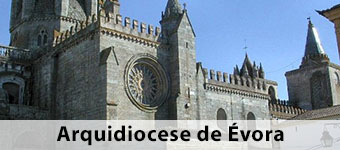
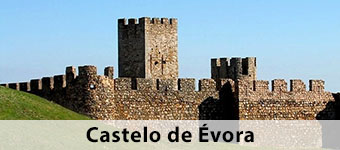
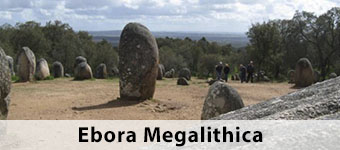
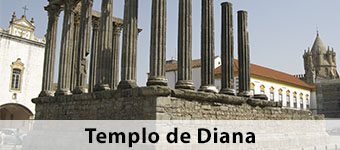
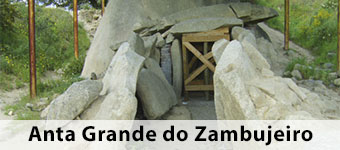
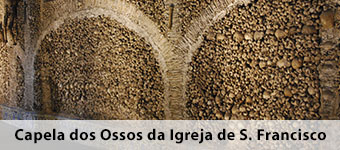
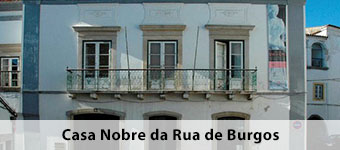
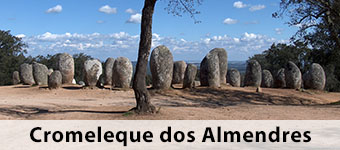
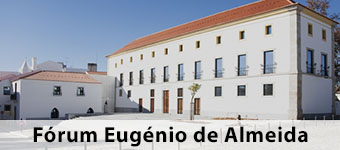
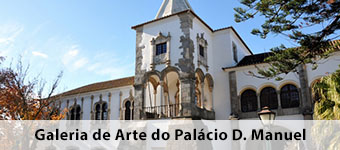
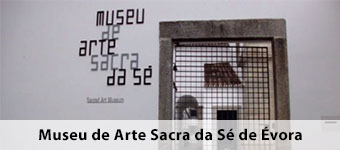
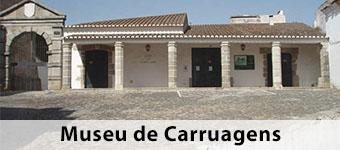
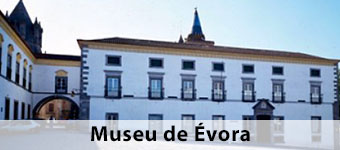
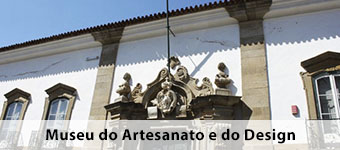
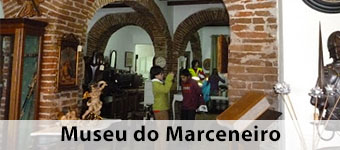
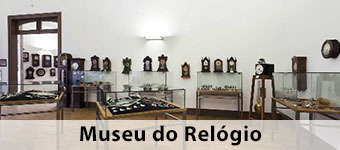
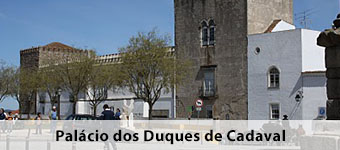
Montemor-o-Novo
It is a town in the district of Evora and seat of the municipality of 7 parishes, Cabrela; Ciborro; Cortiçadas of Lavre and Lavre; Foros de Vale de Figueira; Our Lady of the Village, Our Lady of the Bishop and Silvertown; Santiago Escoural; Saint Cristopher. The municipality is bordered to the north by Coruche, east of Arraiolos and Evora, south of Viana do Alentejo and Alcacer do sal, in the west by Vendas Novas and Montijo.
- Castle of Montemor-o-Novo
- Montemor-o-Novo promotes wine tourism through the Menhir Estate, this discloses their wines with wine tasting.
- Near the road that links Montemor-o-Novo Mora, the Dolmen of the Church’s Commendation is considered one of the most interesting and suggestive Portuguese tapirs. This dolmen was classified as a National Monument in 1936 and still retains the polygonal chamber, corridor, part of the mound and the fractured roof slab, as the population, made by lightning. In the twentieth century, archaeological excavations were carried out, which found a collection of accompanying the dead objects. It is currently as a shelter for shepherds and travelers aimlessly.
- Also classified as a National Monument in 1936, the Antas Great’s Palace stand in a small shed on the Ribeira de Lavre, face to face, these tapirs face is harmonious way. remain preserved with the respective covers, integrated runners in the tumulus.
- In the ancient Church of St. James the Interpretive Center Castle is a space that presents the history and evolution of Montemor-o-Novo, from its antiquity to the present day, through permanent and temporary exhibitions; along with mural paintings of the seventeenth and eighteenth centuries. It is open from April to October from 10h to 13h and from 14h30 to 18:30 pm; November to March from 9 am to 12.30 pm and from 14pm to 17:30; ending on Monday.
- At the headquarters of the Friends of Montemor-o-Novo Group, the Museum Centre of São Domingos Convent houses pottery rooms, religious art, ethnography and bullfighting and the Archaeological Museum of Montemor-o-Novo. It is open from Tuesday to Sunday from 10 am to 12.30 pm and from 14pm to 17:30; closing on Mondays and holidays.
- Mount Savage, an animal reserve, is born from an idea to create a space that values the most of the environment and animal life in the modern society able to find a form of leisure and entertainment respecting animal habitat through education by nature preservation. Built according to the standards and requirements that govern parks for this purpose, Mount Wild opened its doors in 2004.
- In Santiago village of Escoural, its Interpretation Centre Escoural Cave presents an archaeological exhibition introductory visit Escoural cave. Requiring appointment.
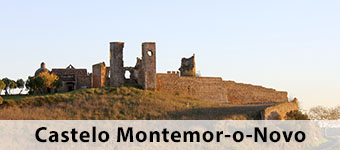
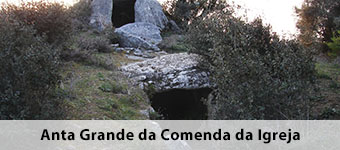
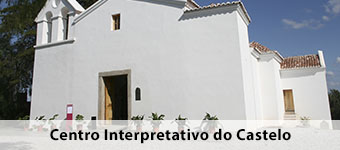
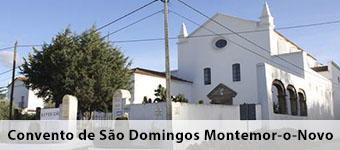
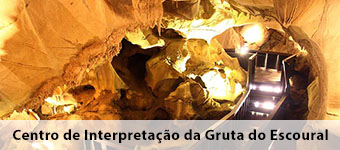
Mourão
It is a borderland village of Evora district and is home to 3 parishes Granja district, Luz and Mourão. They are limited by Alandroal the north by Spain to the east, the southeast by Barrancos, on the south by Moura and west of Reguengos de Monsaraz.
- Castle of Mourão
- The Agricultural Cooperative of Granja C.R. L. both promotes ecotourism as olivoturismo this region.
- Between the village of Luz and Alqueva lake shore, the Museum of Light is a space that offers an interpretation of the changes in this territory elapsed since the onset of the dam, the total submergence village. With a striking and perfectly integrated in the landscape architecture, it is often awarded. The exhibits, both temporary as distinct characters, addressing themes such as identity, history, the landscape of this place, with various readings and interpretations, which reactivates the memories and meanings for the reconstruction of this site. Opened in 2003, although the idea has emerged in the 1980s, this museum has retained its activity and in 2005, received an honorable mention of the Portuguese Association of Museology in the category of “Best Country Museum”; in May 2010, it was integrated in the Portuguese Museum Network. It is open from October to March from 9.30am-13.00h / 14.00h-17.30h and from April to September from 10.00h-13.00h / 14.00h-18.00h; closed on Monday, January 1, Easter Sunday, May 1, 25 December.
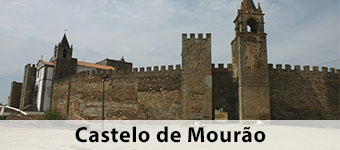
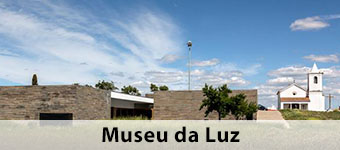
Portel
It is a village of Evora district and is home to the city of 6 parishes, and Amieira Alqueva; Wheat Hill; Portel; Santana; Sao Bartolomeu do Outeiro and Oriola; Vera Cruz. The municipality is limited by Évora the north by Reguengos de Monsaraz east, pro Moura the southeast, by Vidigueira the south by Cuba southwest and southwest of Viana do Alentejo.
- Castle of Portel
- The Agricultural Cooperative of Portel, dates back to 1965 and annually deliver their olives from Sierra de Portel, for the production of olive oil and the extraction of azeita made here through a modern system that controls the temperature and hygiene and quality olive, thereby achieving a product of high purity and quality with a low degree of acidity. The essential element in the Alentejo gastronomy has a great importance for the economy of Portel, with the creation of Mark S. Pedro – Patron Saint of Portel, the holy oil avenges the market with its quality and certification awarded in various competitions both in Portugal abroad.
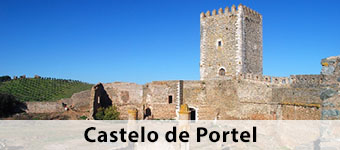
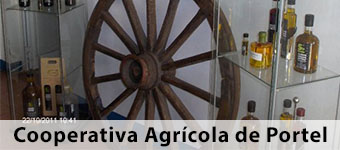
Redondo
It is a village of Evora district and is home to the city of two parishes, Montoito and Redondo. Limited to the north by Estremoz and Borba the north, Vila Viçosa and Alandroal the east by Reguengos de Monsaraz the southeast and west Évora.
- The promote the wines of the region, there is the Cooperativa de Redondo Winery.
- Castle of Redondo
- In order to promote and preserve the authority of Redondo, the Ecomuseum Redondo was created, presenting this in environmental aspects, archeology, culture and religion. This includes approximately 6000 hectares in which are shown the natural and historical heritage.
- In the old Convent of Saint Antony, the Redondo Pottery Museum is a space that preserves and revitalizes the traditional pottery of Redondo, where you can follow the historic route of Redondense pottery, enjoy and purchase representative pieces of clay. This museum also features a playful and educational aspect, to raise awareness of traditional practices of working with clay in the region of Redondo. Open Tuesday to Sunday from April to October the 10H 12h30 – 14h00 – 19h00 and from November to March 10am – 12h30 – 14h00 – 18h00; closing on Monday and holidays from January 1, Easter Sunday, May 1st and December 25th.
- Housed in the former Convent of São Paulo, comes the Museum Hotel Convento de São Paulo, surrounded by beautiful gardens with a fantastic landscape. In the park where it is located are two Florentine fountains and a collection of 50,000 tiles of the eighteenth century. The museum-hotel itself has 32 rooms with the history of the former convent.
- Inaugurated in September 2001, the Regional Museum Redondo Wine aims to discover the Alentejo and its winemaking tradition, through a permanent estate alluding to agricultural instruments, objects used in wine production, images and text associated with the art of making the wine. This estate is arranged chronologically correct way to play the various stages of the wine business, from the land of tomorrow the presence of wine in the glass. Open to the public from Tuesday to Sunday from April to October the 10H 12h30 – 14h00 – 19h00 and from November to March 10am – 12h30 – 14h00 – 18h00; closing on Monday and holidays from January 1, Easter Sunday, May 1st and December 25th.
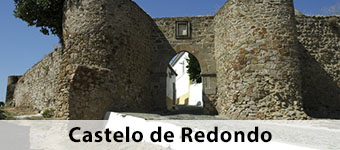
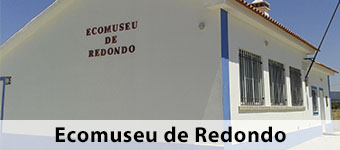
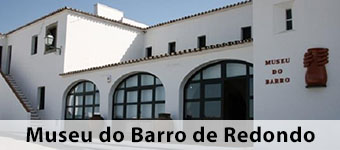
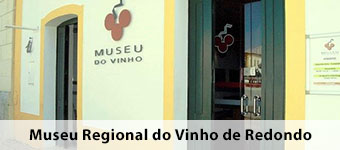
Reguengos de Monsaraz
It is a city of Évora district and is county seat of 4 parishes, Field and Camp; Corval; Monsaraz and Reguengos de Monsaraz. The municipality is bordered to the north by Alandroal, east by Mourão, southeast by Moura, southwest by Portel, Évora and west by northwest of Redondo.
- Castle of Monsaraz
- In order to promote wine tourism in this region entities are highlighted, Cellar José de Sousa, Esporão, Ervideira, Agricultural Company Ltd and Agricultural Corporation Quinta da Várzea, Lda. -.. Adega do Calisto. The CARMIM- Agricultural Cooperative of Reguengos de Monsaraz both promotes its wines and its oil.
- Identified in 1969, the Cromlech of Xerez was erected between the 4th and the middle of the 3rd millennium. C., with a unique plant the “eborense megalithic universe.” It develops from a central menir faliforme 4m high, in which a face has “dimples” ma its verticality. This cromlech contains 50 menhirs. After being discovered and being subjected to an intervention that aimed its original reconstitution, this did not follow the scientific criteria, based on José Pires Gonçalves, author of his recovery, saying the “dimples” that were one of the menhirs represent their original layout. However, much of these standing stones are broken. This cromlech is the only monument transferred in backwater area of Alqueva, being reinstalled in 2004.
- Identified in 1970, the menhir of Bulhôa with the original reconstruction, has 4m high, with two-sided engraved with symbols of a sun, a stick or curved staff, wavy or serpentine and zig-zags, constituting an album of symbolic art megalithic . Shortly after being rebuilt, the September 29, 1970, was classified as a National Monument.
- A Valentine’s Rock is a natural granite outcrop, with a mushroom containing megalithic engraving and always carpeted by loose stones, small in size. This menhir stone also known as fertility was Christianized and converted into a place of passage of the drought processions, between the Chapel of Our Lady of the Rosary and Mato Village (now St. Peter’s Corval). As the archaic tradition single girls, who met the pagan rite of fertility, commuted up to this menhir on Monday of Easter and cast a stone upon this and consulted him on his marriage.
- In the medieval village of Monsaraz, the Museum of Sacred Art of Monsaraz is in the building of Old Town Hall and has a sacred art exhibition and historical documents of Monsaraz region. This building was classified as a National Monument, having been built in the second quarter of the fourteenth century. Open in winter from 10h00-18h00 and 10h00-19h00 in the summer.
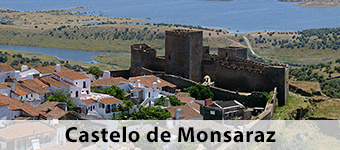
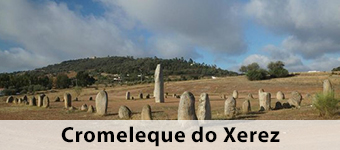
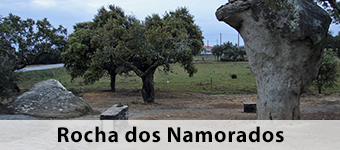
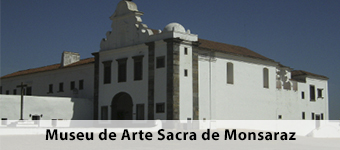
Sousel
It is a village in the district of Portalegre and is 4 parishes Cano county seat, White House, Santo Amaro and Sousel. The municipality is bordered on the north by Avis and Frontier, east and south by Estremoz, Arraiolos by the southwest and west Mora.
- An entity that promotes ecotourism and wine in this region is the Mouchão Estate.
- In 1990, the Municipality of Sousel acquired the collection of images of Christ, the heirs of Wenceslas Wolf, a former antiques dealer. Present at the Museum of Christ, this antiquarian collection includes about 1,500 pieces, most are crucifixes. Open from 09h00-12h30 and 14h00-18h00, ending on Sunday.
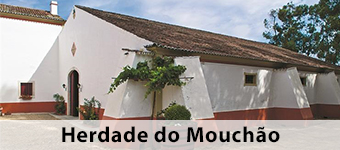
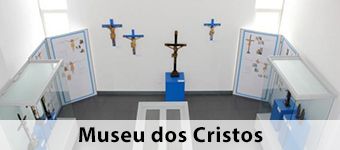
Vendas Novas
It is a city of Évora district and is home to the city of 2 parishes and Landeira Vendas Novas. This municipality is limited by Montemor-o-Novo east, the Alcacer do Sal the south by Palmela west and northwest Montijo.
- The Help Estate – Agricultural Home and Mauritius; Silva, Lda., Promotes the wines of this region through the wine tasting.
- The Ethnographic Area Folkloric Landeira offers both the museum’s collection as a part of multimedia character, being divided according to thematic content, features objects / utensils rural life and workers, in particular, the sower, the campino, the pastor and reapers along with leisure modalities of its people.
- The Teaching Garden of Eating Wild Plants aims to promote professionally, socially and culturally rural areas through courses in the educational center of the Agricultural School D. Carlos I. Open all week from 09h00 to 18h00, the end-to-week by appointment . Ending on some holidays.
- In the former Royal Palace, part of the Artillery School was reused to install a military museum, which presents the entire evolution of artillery from the late nineteenth century, along with some parts used during the World War, between 1914 and 1918. open every day from 10h00 – 12h30 and 14h00 – 17h00, ending the eve of public holidays and days of Christmas and New Year.
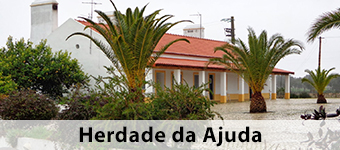
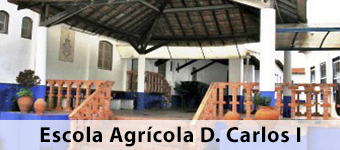
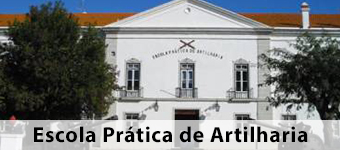
Viana do Alentejo
It is a village of Evora district and is home to the city of 3 parishes, Aguiar, Alcáçovas and Viana do Alentejo. The municipality is limited by Montemor-o-Novo on the north by northeast Évora, Portel by east, southeast Cuba, the south by Alvito and southwest and west by Alcacer do Sal.
- Castle of Viana do Alentejo
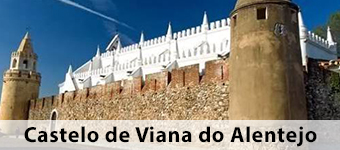
Vila Viçosa
Vila Viçosa is a village of the district of Evora, as county seat generates 4 parishes, Bencatel; wiles; Our Lady of Conception and St. Bartholomew; Sparrows. This municipality is limited by Elva north and east, Alandroal the south by west Redondo and Borba northwest.
- Castle of Vila Viçosa
- The marble Raquel Castro Museum is a space dedicated to marble, with its history, the entire process of extraction and processing of this rock. It is open from 09h00-13h00 and 15h00-19h00 and closed on Mondays and holidays.
- In the Ducal Palace of Vila Viçosa, the Library Museum of the House of Braganza was created in 1933, although its origin is dated 1915, as the testament of the last king of Portugal, D. Manuel II. This is installed from the thirties of the twentieth century, but the museum also holds some facilities Castle, containing the full six small museums, from the armory and the treasure, which house collections with great heritage significance. Open from October to March: 3rd Friday 14H00 – 17H00, 4th Friday 10H00 – 13H00 and 14H00 – 17H00, 5th, 6th, Saturday and Sunday 9h30 – 13h00 and 14h00 – 17h00 and from April to September: 3rd Friday 14H30 – 17H30, 4th, 5th and 6th Friday 10H00 – 13H00 and 14H30 – 17H30, Saturday and Sunday 9h30 – 13h00 and 14h30 – 18h00. Closed on Monday, Tuesday morning, national and local holidays on 16 August.
